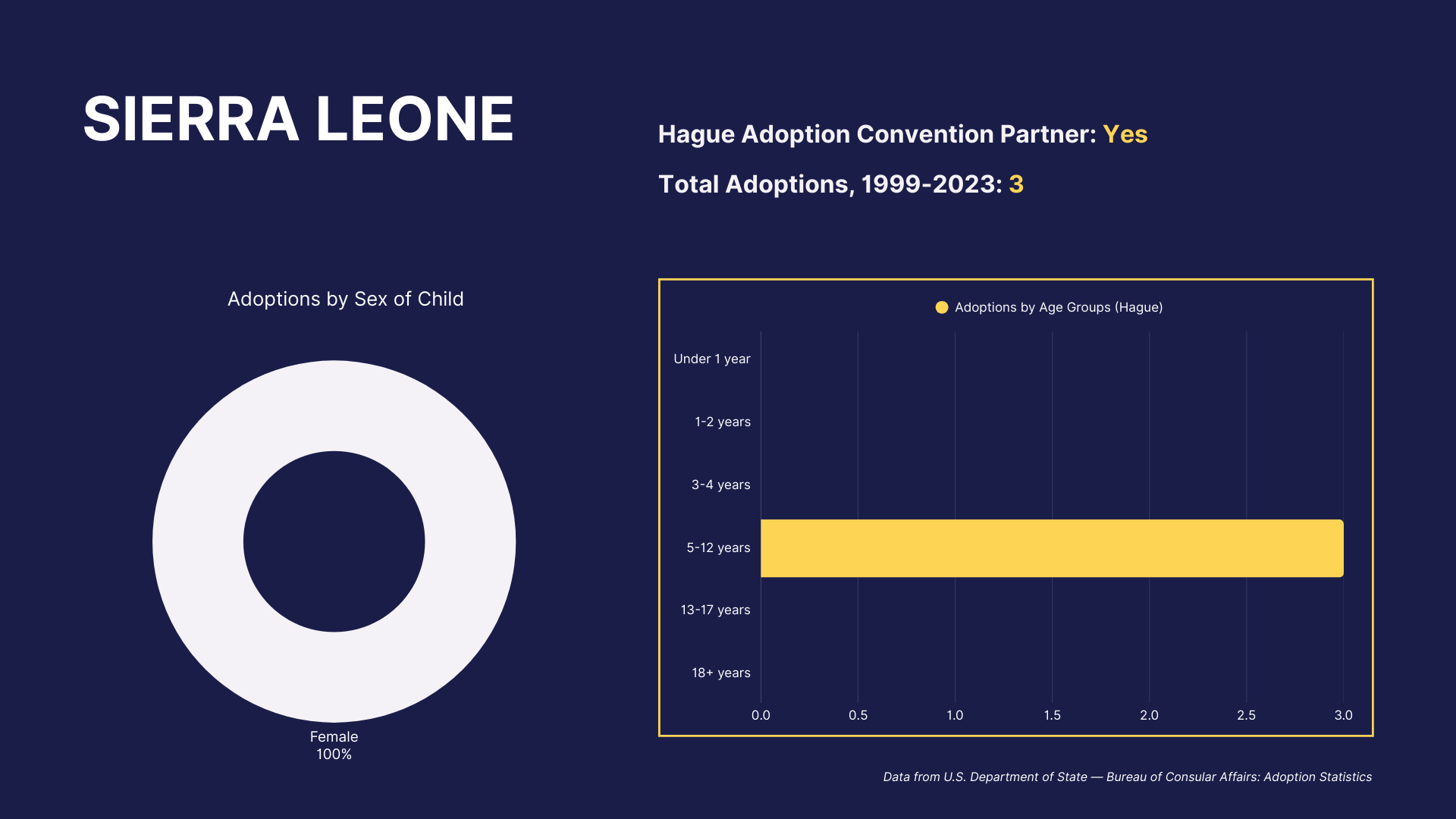After School Programs
Many children receive most of their recreational experiences through these programs. Coaches can be wonderful mentors and for some families after school programs eliminate some daycare needs.
Audiologist
An audiologist provides intervention strategies and services for individuals with deafness or hearing impairments.
Classroom Teacher
Your child’s classroom teacher is the person who will spend the most time with your child and will know her best. A classroom teacher is a valuable resource for helping identify any educational, emotional or social issues the child may be having in school.
Early Intervention Services
Every state offers an early intervention program to help identify infants and toddlers (up to age three) who may have developmental delays or disabilities. An evaluation is completed to determine the child’s cognitive, physical/motor, speech, language, social, emotional and adaptive development. A physician or the local school district can direct families to those services.
Educational Advocate
An Educational Advisor or Advocate helps parents work with the child’s school. As an additional member of an Individual Education Plan (IEP) team, an Educational Advocate provides additional experience and expertise to get the best outcome for the child.
Occupational Therapist
An occupational therapist is a licensed health professional who provides strategies and services to assist individuals with motor or sensorimotor functions, including fine motor manipulation, self-help, adaptive work skills, and play or leisure skills.
Physical Therapist
A physical therapist is a licensed health professional who works with individuals with motor or sensorimotor functioning in such areas as mobility and positioning.
School Counselor
A school counselor may assist in the identification of a child’s needs and may help to determine appropriate responses.
School Nurse
A school nurse provides medical care during the school day, monitors allergic reactions and may administer medication needed during school hours.
School Psychologist
A school psychologist assists in the identification of a child’s behavioral, social, emotional, educational and vocational needs and helps to determine appropriate responses.
School Social Worker
A school social worker is trained to assess a child’s educational needs including social, emotional, behavioral and adaptive needs. She provides intervention services including individual, group, parent and family counseling and serves as liaison between home, school and community.
Special Education Instructional Specialist
The special education instructional specialist provides ongoing support to special and general education instructional personnel. The specialist helps to identify and plan for the least restrictive environment appropriate for the child.
Speech-Language Pathologist
A speech-language pathologist provides intervention strategies and services related to speech and language development as well as disorders of language, voice, articulation and fluency.
Transportation Specialist
A transportation specialist works with the school district to provide special transportation and equipment for students with disabilities.
Tutoring Services
Many children can benefit from short or long-term use of a tutor. Families receiving federal (and some state) subsidies should look to the schools for help rather than Children and Family Services.
Causes: Most children are abandoned at birth or relinquished by birth family due to poverty or social stigma of single parenting. In some cases birth family rights are terminated by the government.
Pre-Adoptive Care: It is inconsistent. Children may live in government run centers or orphanages or are placed with foster families.
Post-Adoptive Concerns: Children usually arrive in the US between ages 1-12
General Health: Fetal alcohol spectrum disorders (FASD) is a concern
Quality of Medical Records: Limited
TIP: Bulgaria is party to the Hague Adoption Convention. Do not adopt or obtain legal custody of a child in Bulgaria before a U.S. consular officer issues an Article 5 Letter.
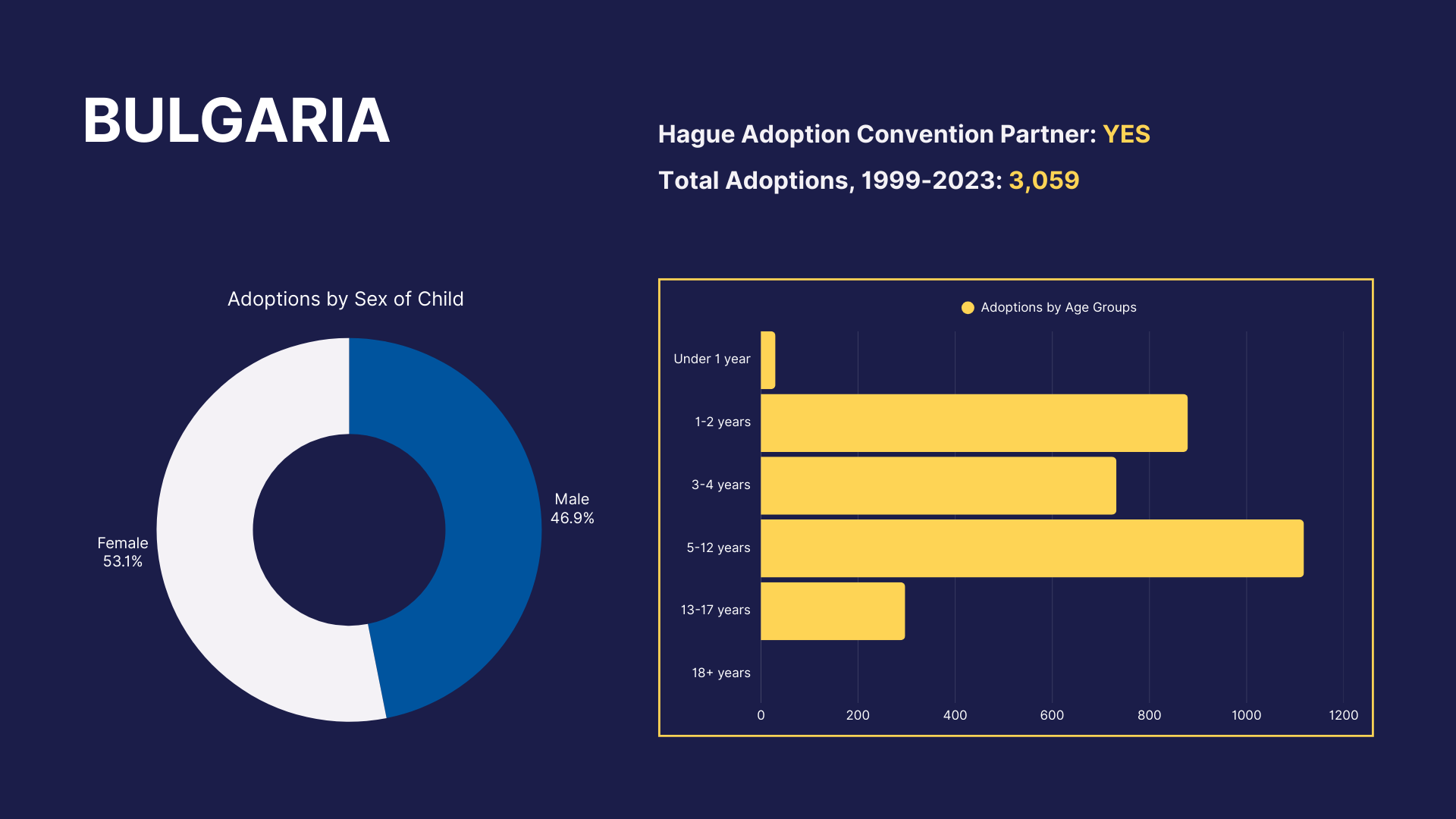
Causes: Children are abandoned or relinquished or parental rights have been terminated
Pre-Adoptive Care: Children are in orphanages, private homes or group care
Post-Adoptive Concerns: Children of all ages arrive in the US
General Health: Most have minor to major medical issues or developmental concerns
Quality of Medical Records: Children are usually abandoned with no birth or family history
TIP: Women generally do not change their name in Colombia so the courts do not expect variations in name from birth certificate to marriage license. Have a notarized document explaining your name change if you have documents in both maiden and married names.
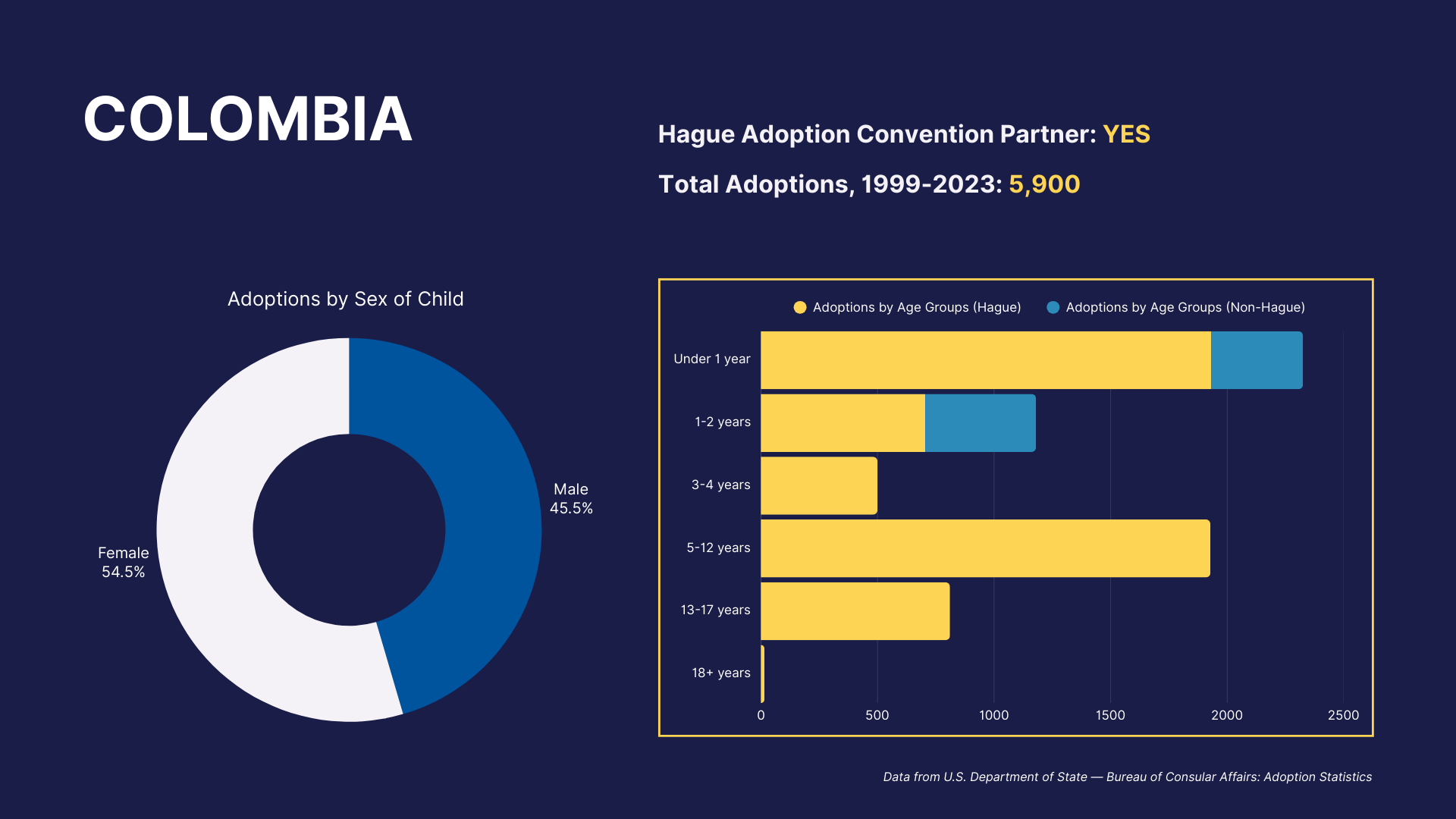
Causes: Children are relinquished due to loss of a parent, especially mother during child birth or due to malaria or AIDS, poverty, and the stigma of single motherhood
Pre-Adoptive Care: Children of all ages are available for adoption including infants. Older children may have been on the street at some time although they are cared for in orphanages or hospitals prior to adoption.
Post-Adoptive Concerns: Street-wise children can have difficult time adapting
General Health: One of the few places where extreme malnourishment is possible, some children die before adoptive parents can bring them home
Quality of Medical Records: All children are tested for HIV, hepatitis B, and other basic illnesses before being matched for adoption. Adoptive parents receive test results and some family background if it is available.
TIP:Parents open to either gender tend to have a shorter wait time for a referral
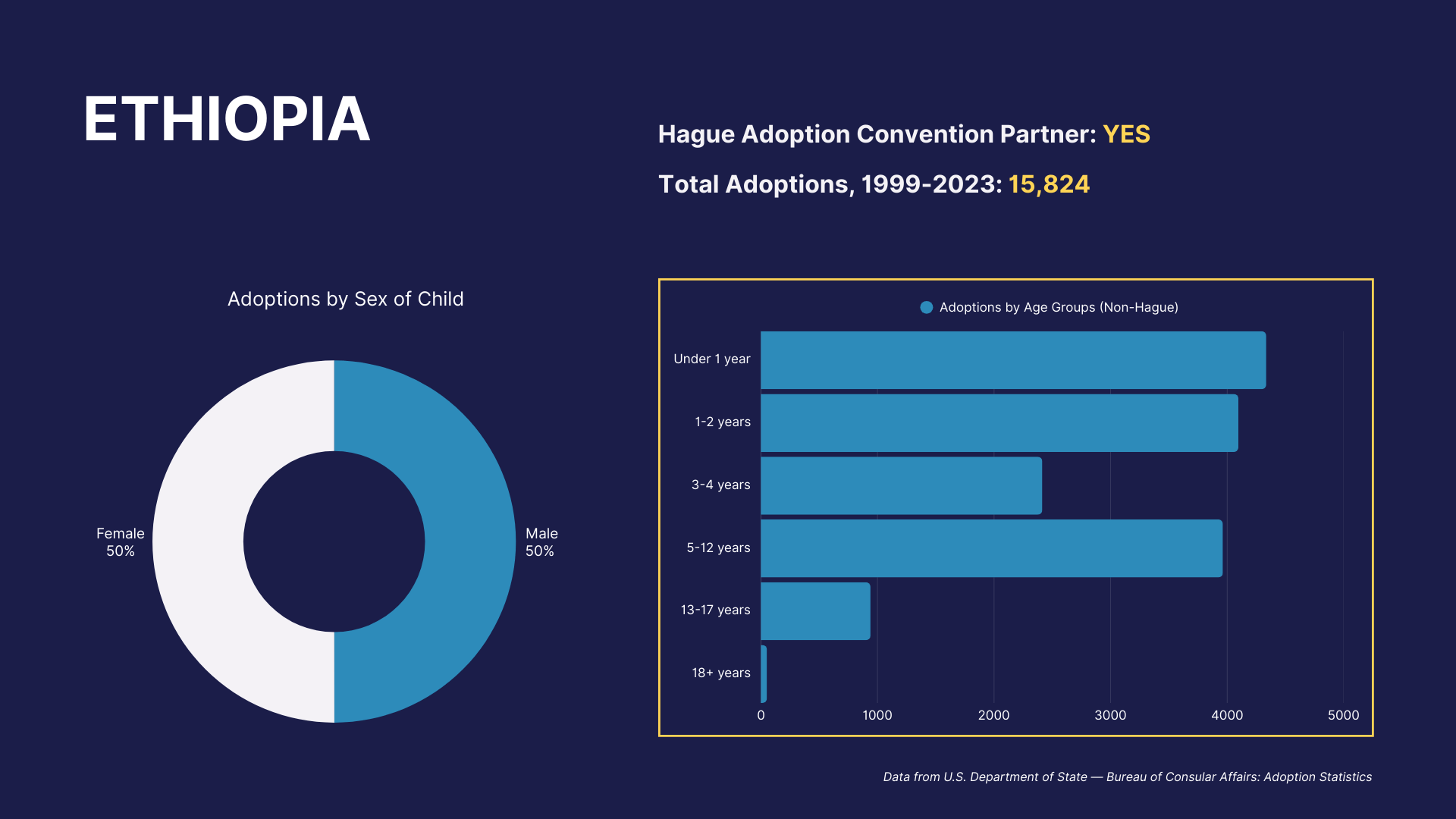
Causes: Children are typically abandoned or relinquished due to poverty or are made orphans after natural disasters
Pre-Adoptive Care: Children typically wait in an orphanage
Post-Adoptive Concerns: Children usually arrive in the US between ages 1-12
General Health: Most are in good health but some have special needs
Quality of Medical Records: Average
TIP: Applicants may have any number of biological or adoptive children
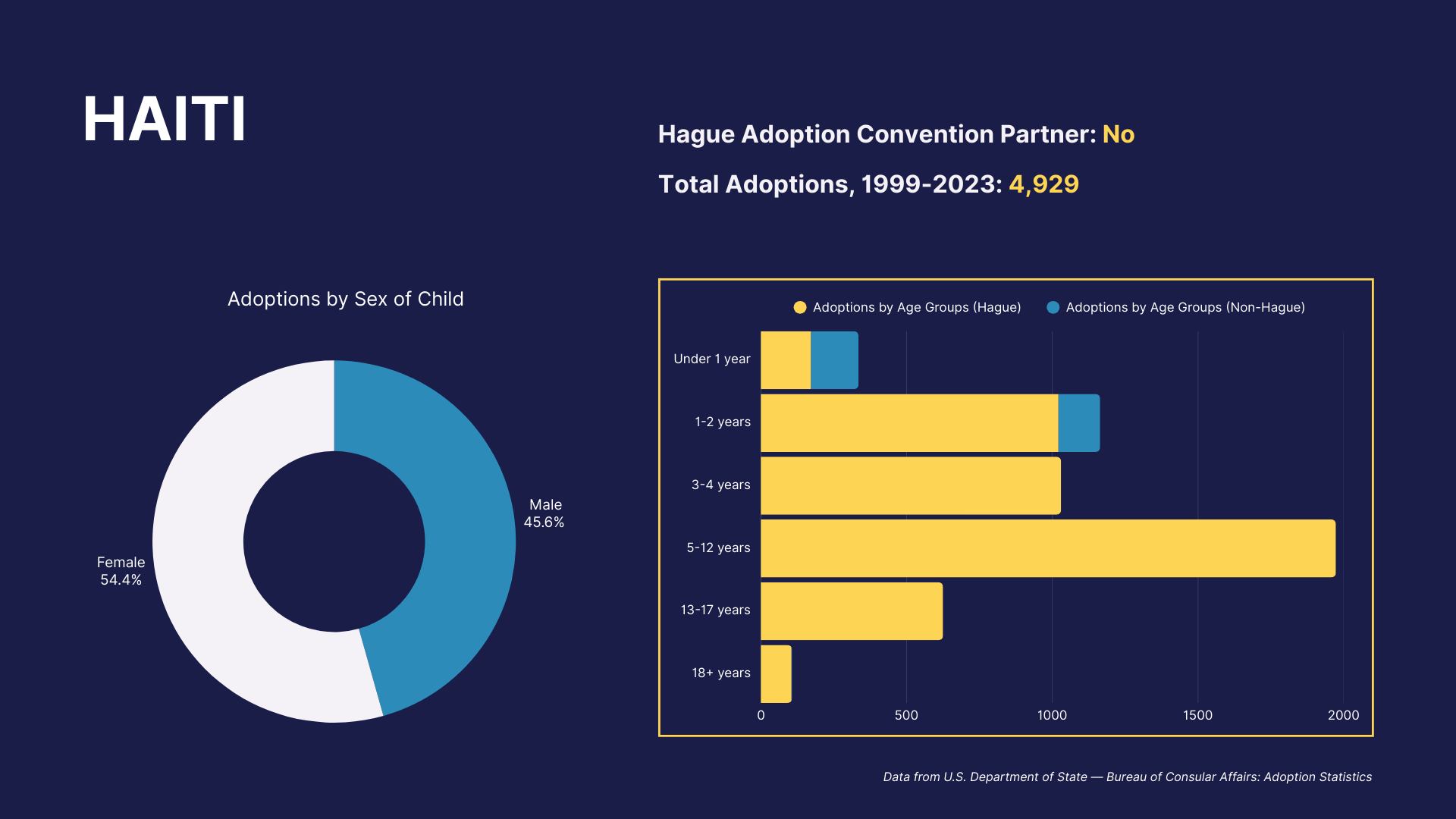
Causes: The majority of abandoned children in India are girls
Pre-Adoptive Care: Children typically wait in an orphanage, but foster care is starting to be used
Post-Adoptive Concerns: The majority of children arrive in the US under age 3
General Health: Malnutrition is a concern. Many of the children have correctible medical conditions.
Quality of Medical Records: Children are usually abandoned with no birth or family history
TIP: People of Indian backgrounds may request healthy children

Causes: Poverty, HIV/AIDS
Pre-Adoptive Care: Orphanages
Post-Adoptive Concerns: Children usually arrive in the US over the age of 5
General Health: Limited medical care
Quality of Medical Records: Children are usually abandoned with no birth or family history
TIP: Not all children in orphanages are available for adoption
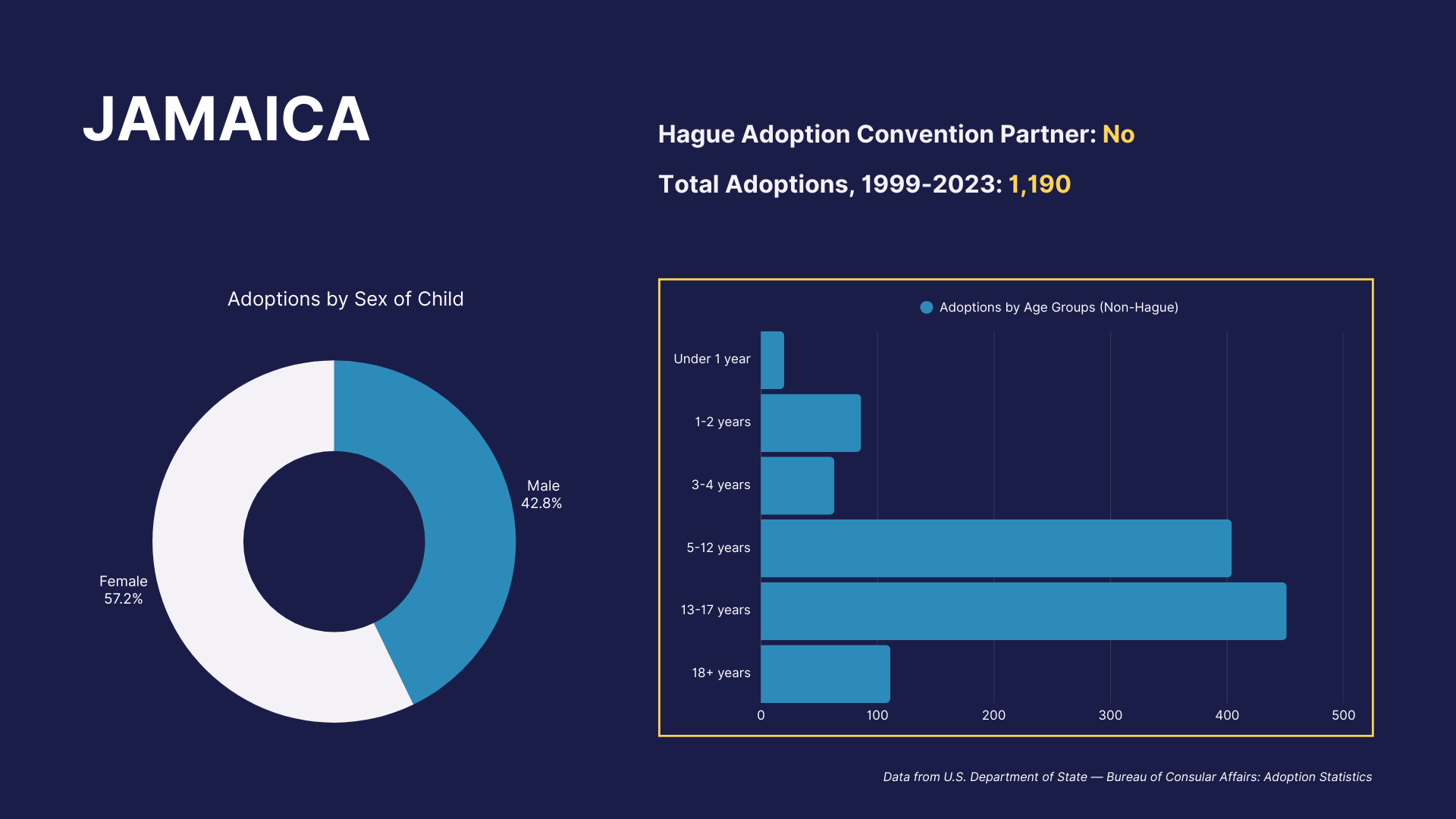
Causes: Children are voluntarily relinquished by young, single mothers in response to the stigma of unwed motherhood
Pre-Adoptive Care: Children are in foster care while awaiting placement. In the past, children have come home as infants but now will be slightly older due to policy changes effective January 2007.
Post-Adoptive Concerns: No understanding of alcohol risk so FASD is being seen
General Health: Children identified as special needs may not be. Parents are generally looking for perfect children and any medical flag may be cause for special status.
Quality of Medical Records: Korea is recognized for their high quality of care and referral information typically includes information on the birthparents as well as the child’s medical and developmental history
TIP: Marked increase in reported alcohol use in young Korean women, possibly due to increased advertising showing young women drinking
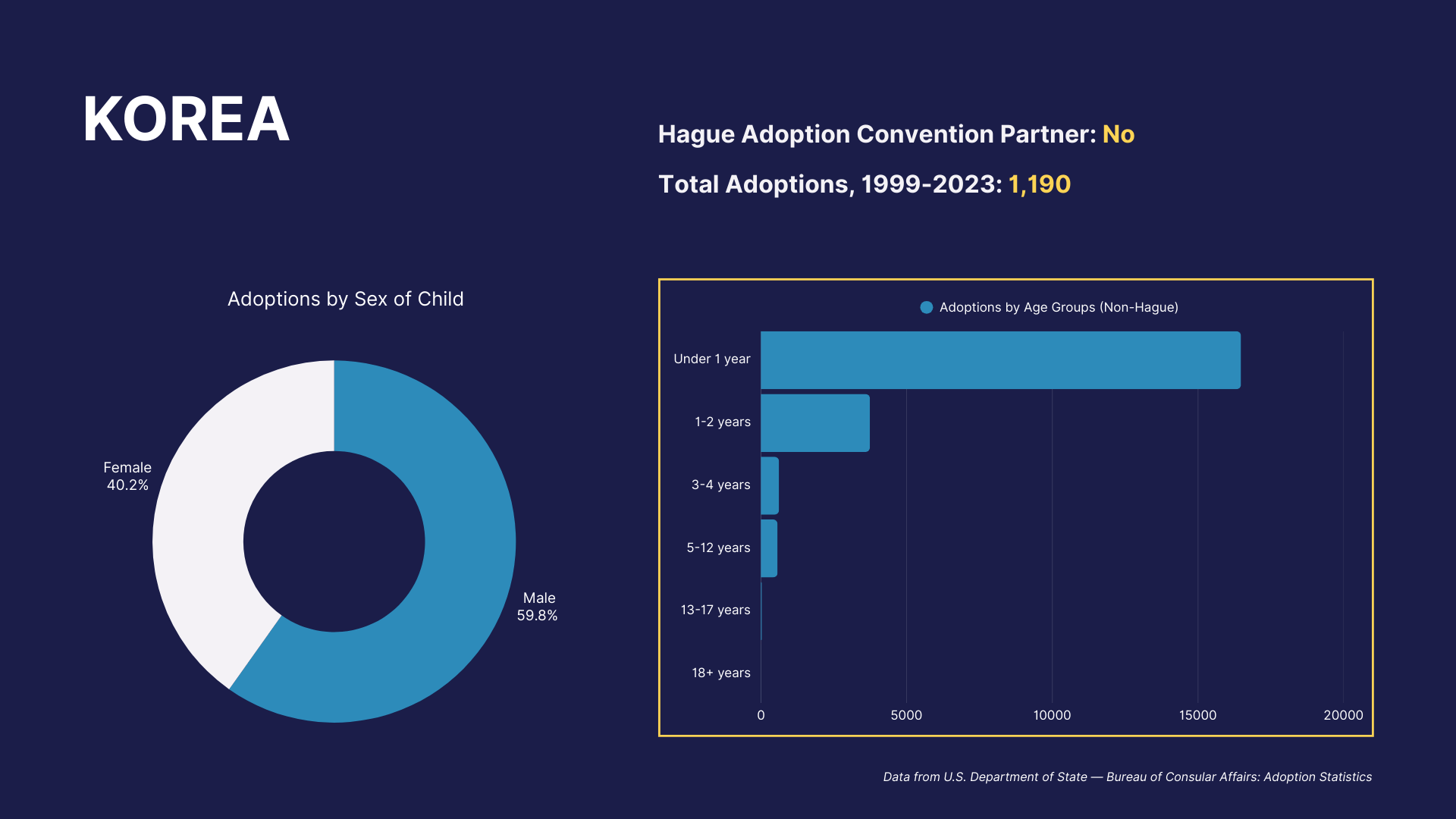
Causes: Parental rights are often terminated due to addiction
Pre-Adoptive Care: Children typically wait in an institution
Post-Adoptive Concerns: Children usually arrive in the US over the age of 5
General Health: Limited medical care
Quality of Medical Records: Average
TIP: Children in Latvia become eligible for international adoption at age 9 or older, unless they are part of a larger sibling group or have special medical needs
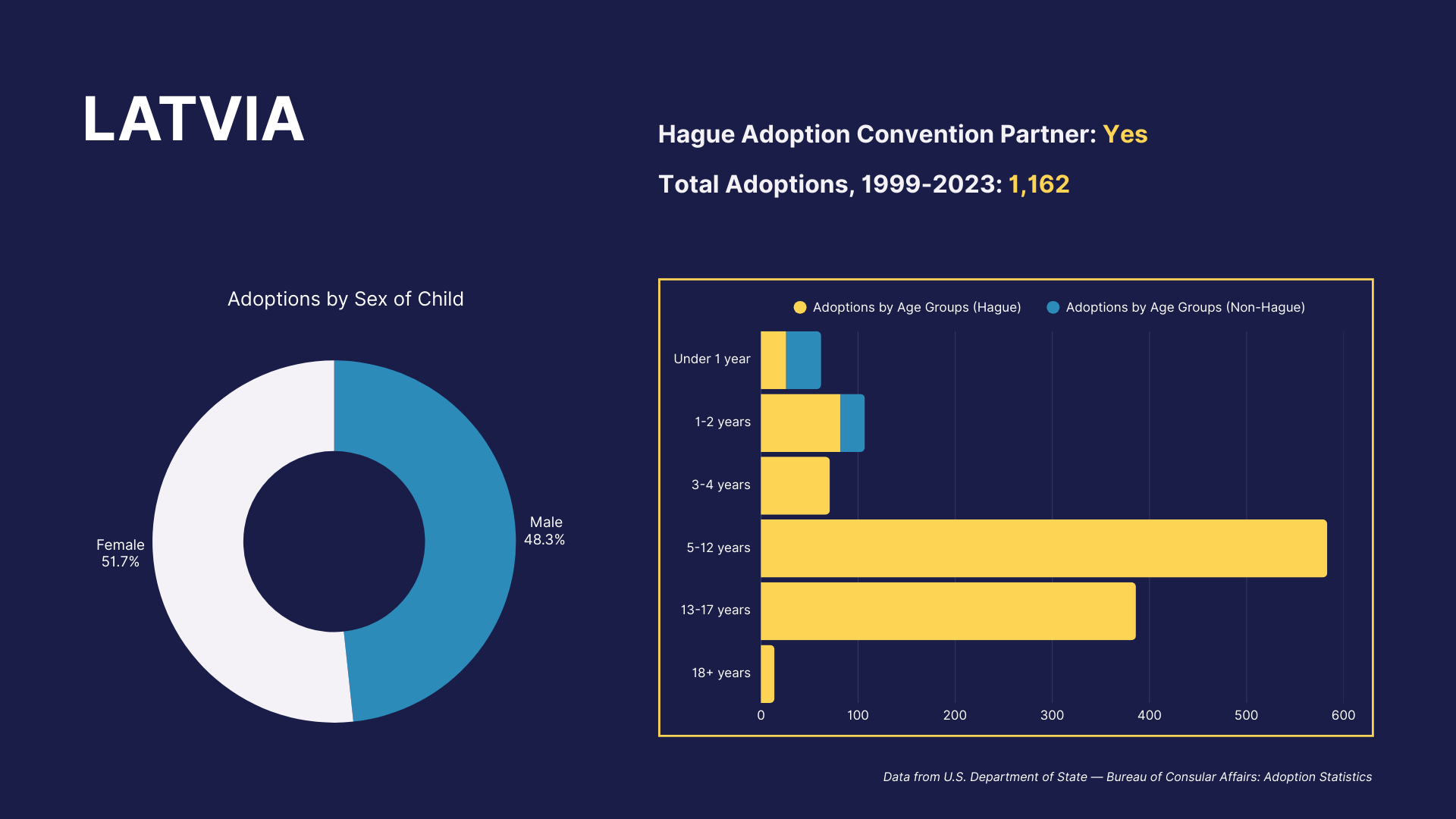
Causes: Relinquishment or abandonment
Pre-Adoptive Care: Children typically wait in an orphanage
Post-Adoptive Concerns: Children of all ages arrive in the US
General Health: Limited medical care
Quality of Medical Records: Limited
TIP: There are no age requirements for the parents for intercountry adoption in Liberia
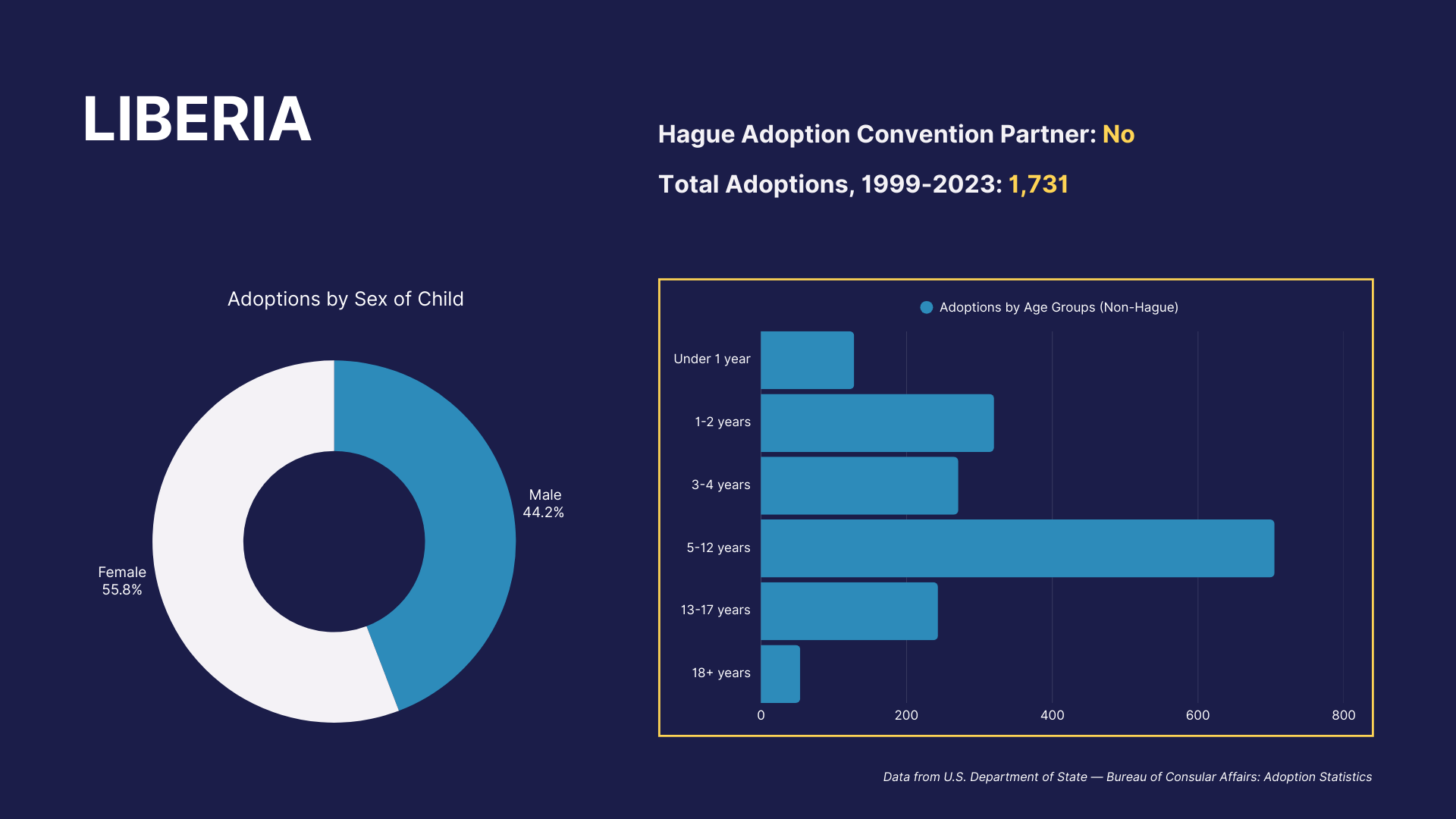
Causes: Poverty and social problems
Pre-Adoptive Care: Orphanages
Post-Adoptive Concerns: Children of all ages arrive in the US
General Health: Limited medical care
Quality of Medical Records: Children are usually abandoned with no birth or family history
TIP: Singles can adopt but usually must adopt a child of the same sex as themselves
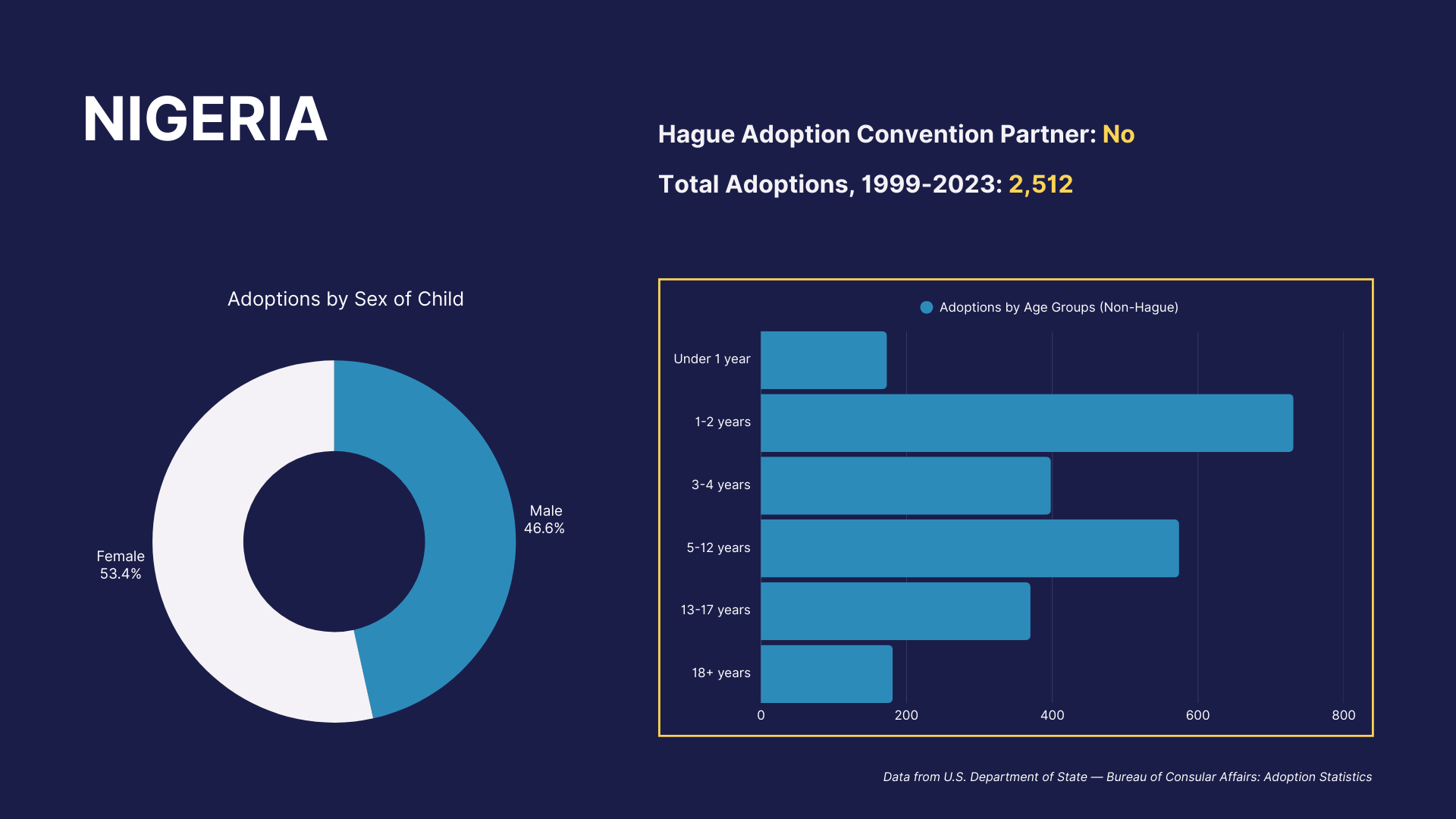
Causes: Most abandonment of children is due to illegitimacy especially when a child is female
Pre-Adoptive Care: Children wait primarily in orphanages
Post-Adoptive Concerns: Children usually arrive in the US under age 3
General Health: Limited medical care
Quality of Medical Records: Children are usually abandoned with no birth or family history
TIP: Pakistan has no statute that provides for adoption
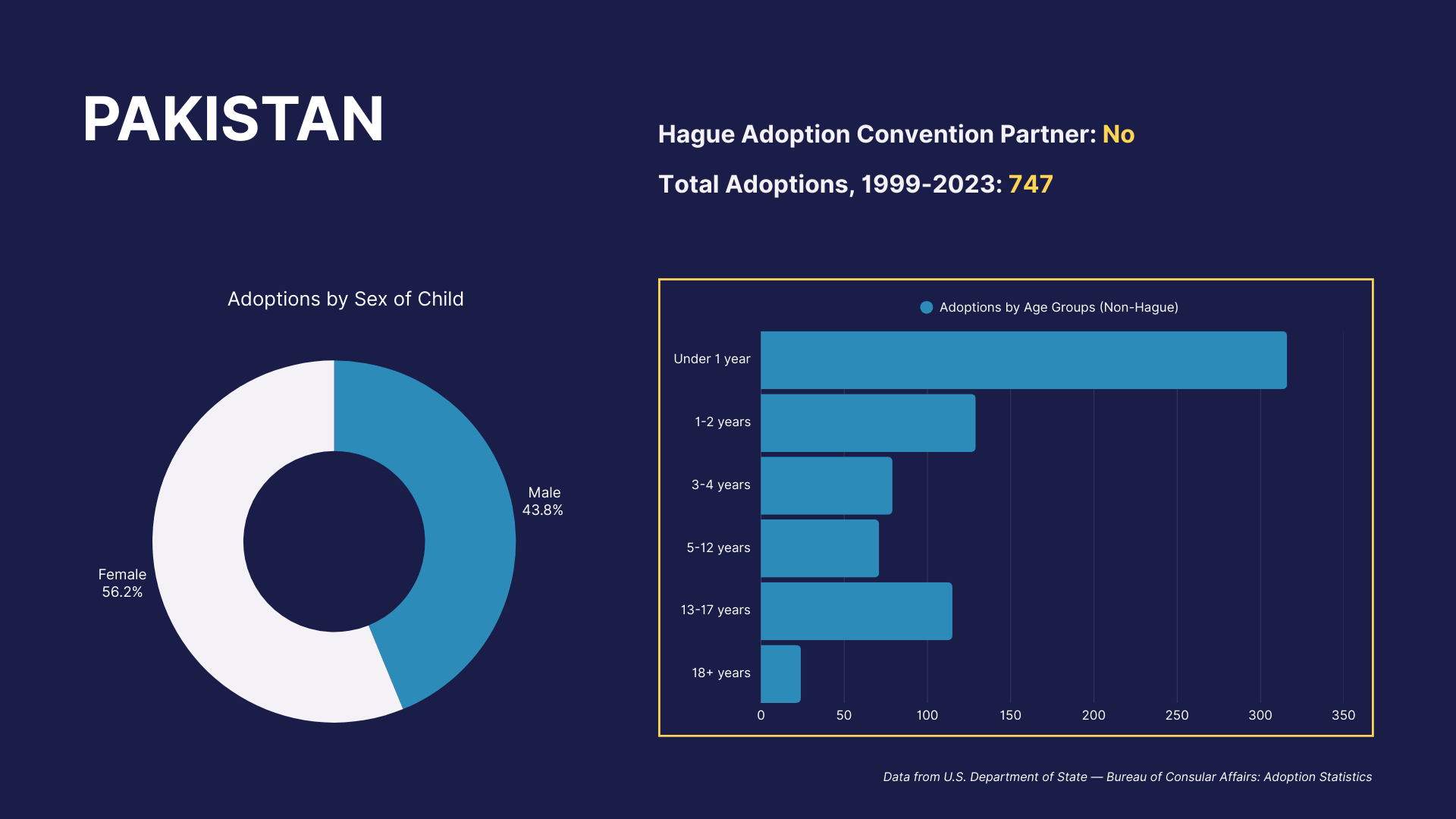
Causes: Most children are abandoned at birth or relinquished by birth family due to poverty or social stigma of single parenting. Some are orphaned due to natural disasters.
Pre-Adoptive Care: Children wait in orphanages
Post-Adoptive Concerns: Children are usually toddlers or older when they arrive in the US
General Health: Good
Quality of Medical Records: Children are usually abandoned with no birth or family history
TIP: Many older Filipino children available for adoption have been exposed to some English
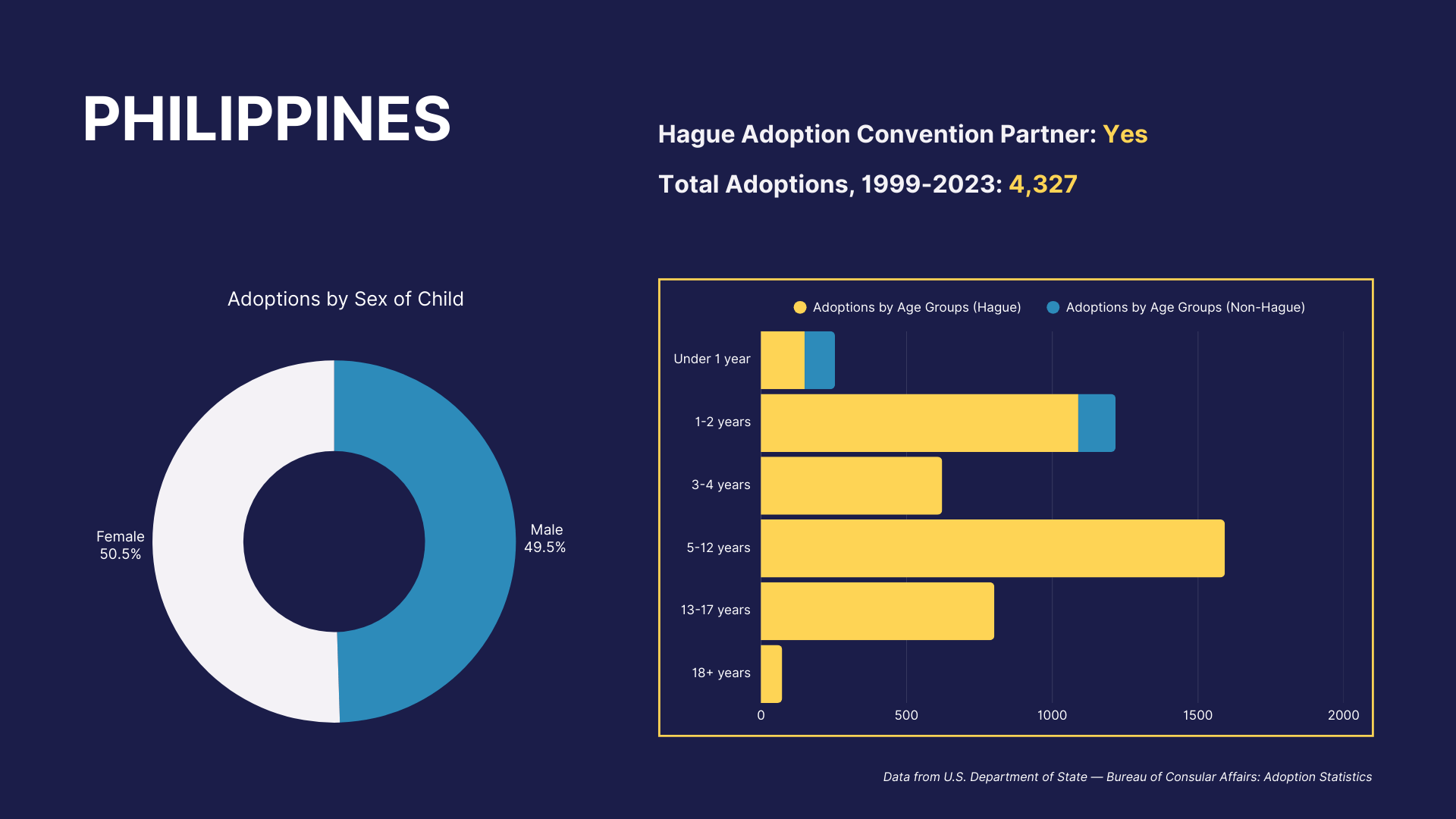
Causes: Poverty is the primary reason for abandonment or relinquishment. Unemployment is high.
Pre-Adoptive Care: Children typically wait in an orphanage, but foster care is increasingly used
Post-Adoptive Concerns: Children usually arrive in the US between ages 1-12
General Health: Generally excellent care. FASD is quite common.
Quality of Medical Records: Above average
TIP: Schooling in Poland is structured similarly to that in the United States
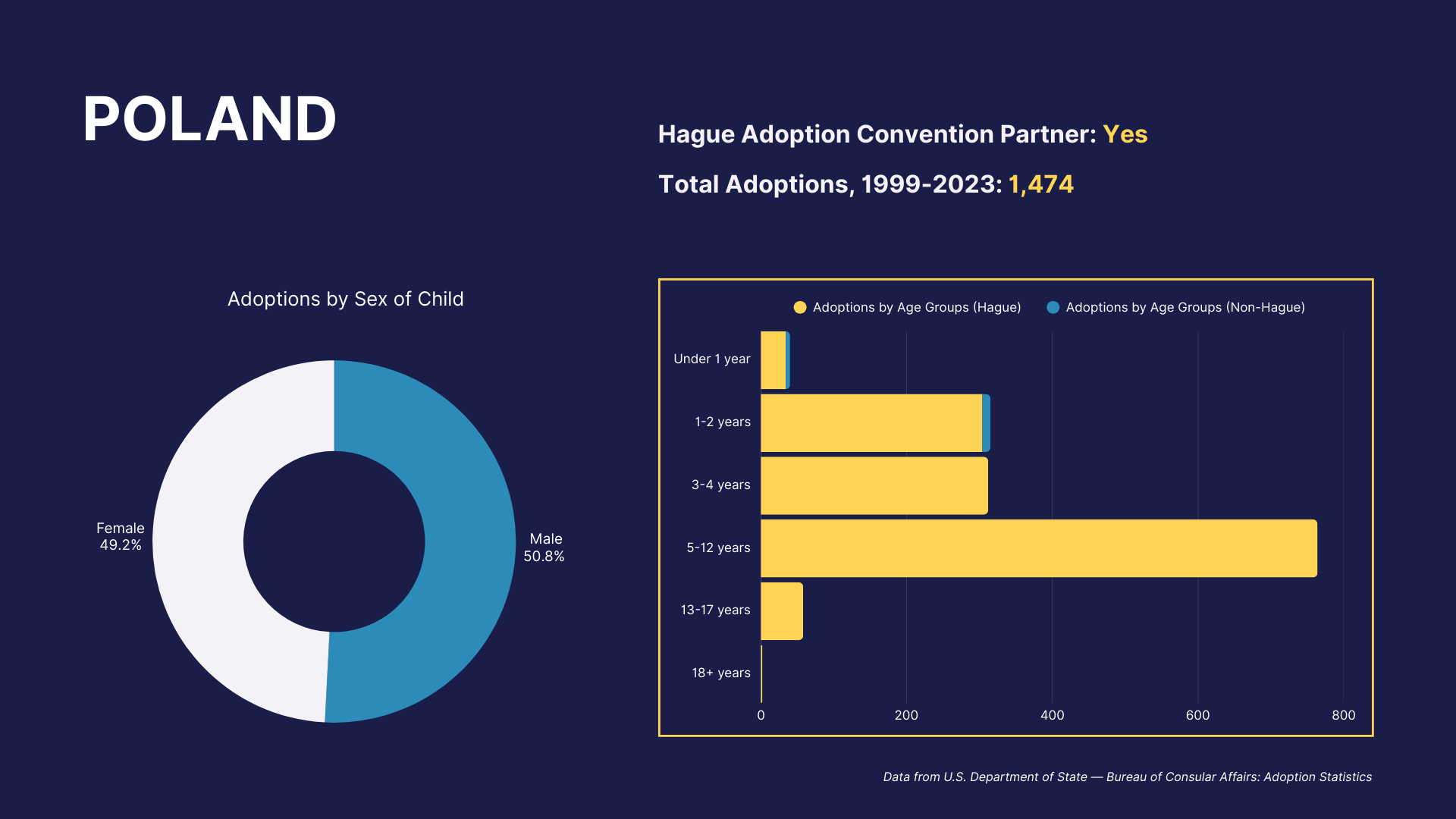
Causes: Ebola has orphaned many in Sierra Leone. Poverty also leads to abandonment.
Pre-Adoptive Care: Most children are in orphanages
Post-Adoptive Concerns: Children usually arrive in the US between ages 5-12
General Health: Limited medical care
Quality of Medical Records: Limited
TIP: Boys and girls are equally represented in the numbers of children available for adoption
